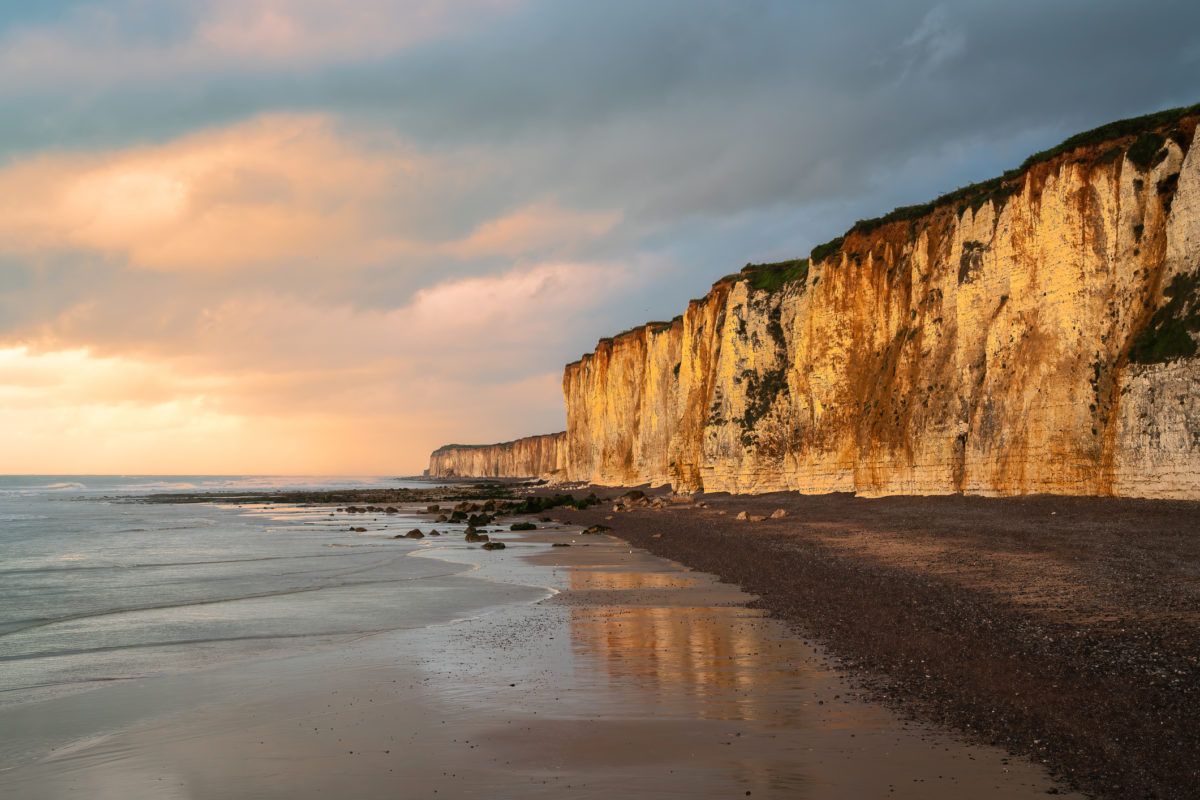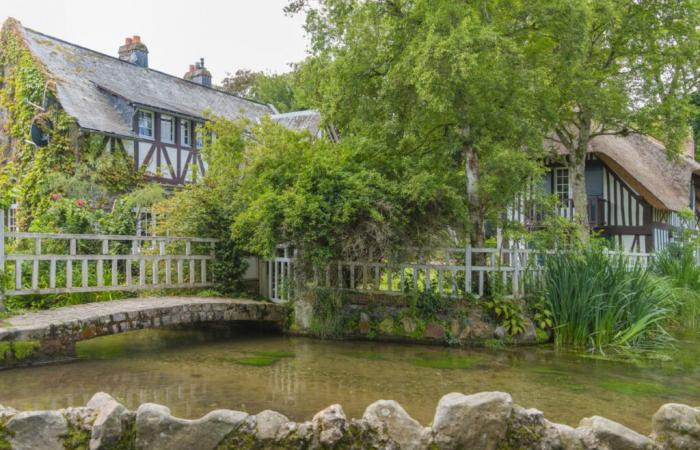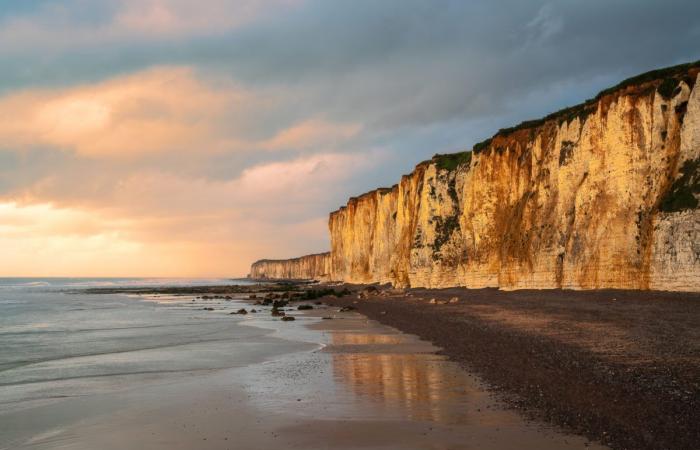A long language of limestone cliffs draws the Norman coast. It is there, between the waves of the English Channel and the agricultural expanses of the Pays de Caux, that a village of 515 inhabitants has retained its character for centuries. Its cobbled alleys, its old houses and its stream which travels barely more than a kilometer before reaching the sea make it a remarkable place. first territory of Seine-Maritime to join the association of the most beautiful villages of France in 2017, this locality deserves to dwell on it. Here is Veules-les-Roses, witness to a millennial history on the Côte d’Albâtre.
A coastal village shaped by time
26 km from Dieppe and 7 km from Saint-Valery-en-Caux, Veules-les-Roses is located on the Caux plateau, facing the Channel. The village was established in the 4th century and has crossed many difficult times. From barbaric incursions to bombing of 1940-1944, including religion wars, the inhabitants have always rebuilt and preserved their heritage.
The municipality extends over 5.19 km² and currently has around 515 inhabitants, a slightly decreasing population in recent years. The Veulais, as they are called, live in a setting where more than half of the homes are secondary residences.
The emblematic natural element of the village is the Veules1149 -meter stream considered as The smallest river in France. It takes its source from the water cress before crossing the locality and throwing itself into the English Channel. Until 1897, the village was called Veules-en-Caux, before changing their names to emphasize the presence of the many roses that decorate the facades and gardens.
Architectural and historical elements

The Saint-Martin church represents a central point of local heritage. Mainly dating from the 15th century with an older bell tower (13th century), it contains a louis XIII style altarpiece and recently restored wall paintings. The building testifies to successive reconstructions after the conflicts that have marked the region.
The landscape built of Veules-les-Roses illustrates the meeting of architectural styles: half-timbered houses, traditional thatched cottages and 19th century villas coexist harmoniously. This last category recalls the transformation of the place into a prized seaside resort of Parisian artists and intellectuals.
From 1826, actress Anaïs Aubert de la Comédie Française discovered this coastal village. She then led to the actor Etienne Mélingue around 1850. The writer Paul Meurice regularly received Victor Hugo, helping to make this place known in artistic circles. This attendance has inspired several works and attracted painters captivated by the landscapes between land and sea.
The old water mills installed along the Veules recall the past economic activity of the village. Some have been converted into dwellings or workshops, thus preserving their structure while giving them a new function.
Discovery course
To explore Veules-les-Roses, a 3.5 km circuit (round trip) allows you to follow the price of the Veules from the beach to its source. This marked journey guides visitors through the different districts and representative sites.
The visit generally begins with the seafront, with its pebble beach which, at low tide, reveals an extent of fine sand. From there, we go up rue Victor Hugo to the historic center, where shops and old dwellings are concentrated.
The cavée, a path cashed between two slopes, leads to the water cress where this aquatic plant has been cultivated for generations. This peaceful place with its clear water pools constitutes a pleasant step before continuing to the different mills which punctuate the route of the river.
Surrounding natural spaces

For walking enthusiasts, several hiking routes leave from Veules-les-Roses. The GR21, which follows the coast of Albaster from Le Havre to Tréport, crosses the village and allows access to the platforms that surround it. About 1.3 km from the center, the belvedere named question point offers a panoramic view of the coast and the entire village.
A 5 km circuit connects Veules-les-Roses in Sotteville-sur-Mer by the heights. This route alternates between cultivated areas and perspectives on the sea, with views of limestone cliffs characteristic of this portion of the Norman coast.
For those looking for a longer route, the route of Veules-les-Roses in Saint-Valery-en-Caux (9 km) crosses different landscapes between cliffs and countryside, showing the diversity of environments in the country of Caux.
Practical information
Veules-les-Roses has a varied range of accommodation. The Douce France hotel is less than 500 meters from the sea, while several guest rooms occupy old renovated residences. Seasonal rentals complete this offer, in a village where 57% of the accommodation is secondary residences.
Local cuisine highlights sea products. Stalls on the seafront offer daily fish, shells and crustaceans according to the seasons. A local specialty, the oyster of Veules called “La Veulaise”, is cultivated on the foreshore of the village and constitutes the first high oyster in the sea of Seine-Maritime.
For the visit, several parking areas exist, with a limited capacity in the tourist season. The Cressonnières car park, located at the entrance to the village, allows you to start exploration with the source of the Veules before gradually descending to the sea.










